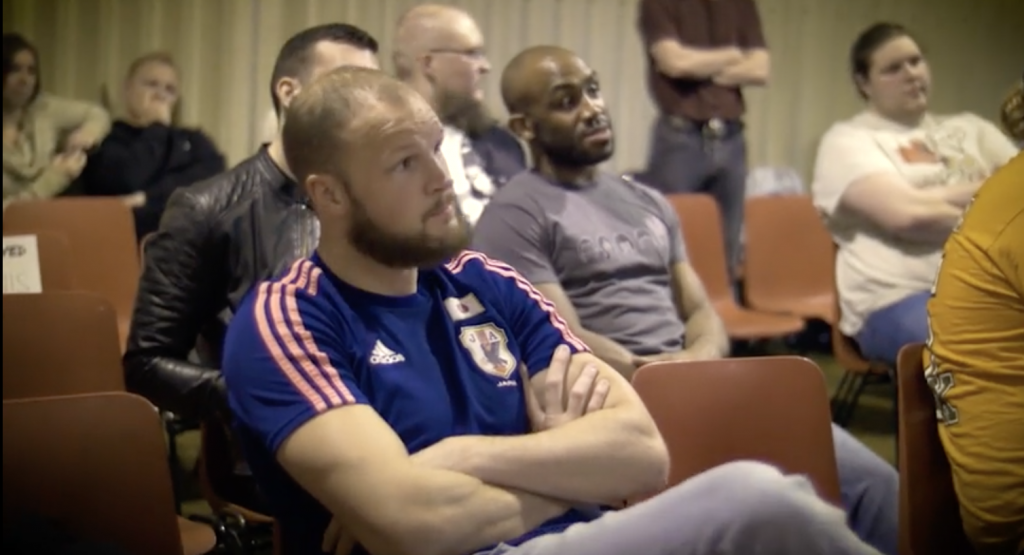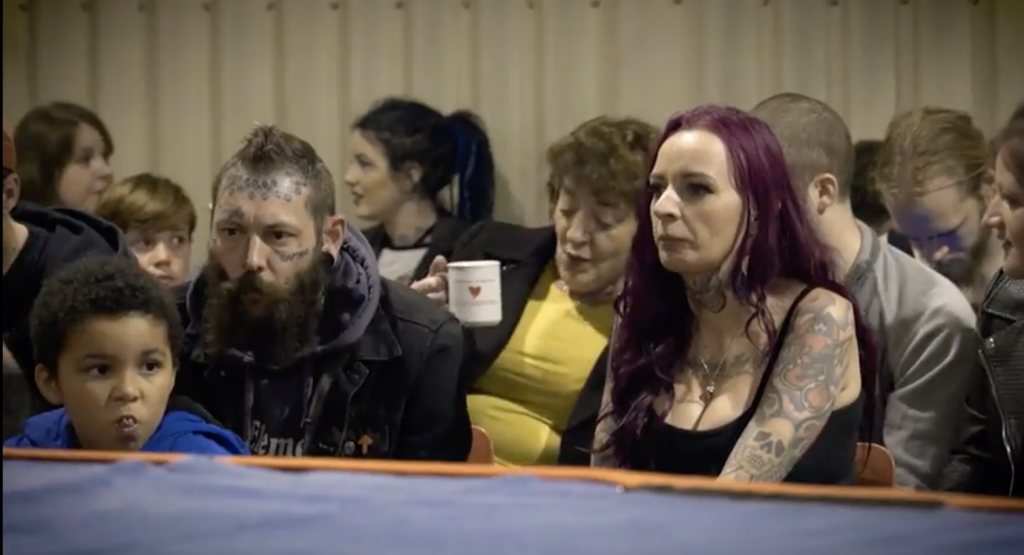
Wrestling in Church
A story of re-connection – with God and with community
Here at T4CG we emphasise the importance of the local church becoming more relational and outward-facing. But many churches have got stuck in an inward-facing culture, or even when they do engage with the community, view the neighbourhood as somehow ‘other’, either in terms of ‘outreach’ or as an object of service or evangelisation. But increasingly church leaders are sensing the need for the church to embody more authentically God’s call to reciprocity and friendship in the local. In this story, Nigel Rooms writes about his experience of working with a church in Nottingham. St Ann with Emmanuel Church went on a spiritual journey of discovery with surprising results, enabled by the 3-year Partnership for Missional Church (PMC) process which Nigel now leads.
All stories are told from the perspective of the storyteller and are “true” within their perspective, much like the Four Gospels tell the story of Jesus in different ways. No doubt the people of St Ann with Emmanuel themselves would tell the story differently (see the video at the foot of this page) and I am sure this story has moved on significantly since it was last recorded. But this is my take as an involved observer on what happened.
St Ann with Emmanuel was created from two other churches which were knocked down as part of a massive regeneration in the 1960s and 1970s within the area also known as St. Ann’s which is located in the inner-city ring of Nottingham. At that time, it apparently had one of the youngest church councils in the whole diocese, which was reflective of its vibrant membership.
Fast-forward to the 2010’s, where the parish sees the arrival of a new minister (who I need to declare was my wife) after the retirement of a vicar who had served the parish for over thirty years. Between 2011 and 2014-5, the church decided to go on the three-year Partnership for Missional Church (PMC) journey.
A key phase of this process is a year of “listening” within the church and in the community. Out of this, the church identifies an “adaptive challenge.” This is a challenge where you don’t begin with a determined path of how to solve an identified “problem”, but rather explore and experiment around a need that you have agreed must be addressed.
The St Ann’s congregation realised several things.
The first was that there were invisible but very real barriers between the church people and the community. Part of the reason for this was that many of the church members and leaders from the early days of the church, although still coming to worship and still deeply connected, had “gentrified” and moved out of the area.
The congregation also learned that their demographic profile did not reflect that of the local community. The neighbourhood had become increasingly multi-cultural. Further, the congregation realised their church had no significant relationships with any of the five most important local institutions (community centre, library, medical centre, homeless re-housing hostel etc) that were within 250 metres of the church building.
The church had also turned in on itself in some fearfulness of what was ‘out there’ – which did, to be fair, include a drug culture, the attendant violence that goes along with it, and which gave the area a poor reputation in the city as a whole (we tried once to do online food shopping but the driver refused to do the drop-off – we didn’t try again).
Thus, the church’s adaptive challenge – one they didn’t know the answer to – was framed as something like ‘overcoming barriers’.

Lay members of the church who joined their PMC Steering Team learned over time how to “Dwell in the World” – that is they learned how to build ‘public’ relationships with ‘people of peace’ in the community outwith the church (somewhat like in Luke 10:6).
In practice, this involved connecting with some of those local institutions mentioned above, and with the local Slimming World branch which met in the church hall (which is physically connected and mostly open to the worship space).
These relationships were good and fruitful as far as they went, but they never quite ‘stuck’ in terms of generating a life-giving collaboration across the boundary of church. Nevertheless, these faithful Christians were learning something profound – how to ‘overcome barriers’ and how to conquer their fears.
One day the church leadership team received a request. The Churchwarden, who was fairly new, was living inside the parish with his family, and his daughter seemed to be benefitting from the self-esteem generated by learning wrestling with the House of Pain Wrestling Academy. Through her, he heard that they were struggling to find a venue for their monthly show on a Saturday night.
The image of the wrestlers was clearly intimidating to people who didn’t know what they were up to. But the Churchwarden’s view was different – thanks to the listening posture he had learned, and because of his positive relationship with them through his daughter.
The church hall, it turned out, was an ideal venue and the number of seats that could be accommodated was adequate for their needs. The church said YES to this request! The congregation had learned how to overcome boundaries – and they felt God seemed to be in this.
The monthly show began. The wrestlers were truly grateful to the St Ann’s community for the relationship, for the opportunity to show off their skills again and to entertain people – when so many others had said NO them.
Quickly, several things happened.
First, the Curate created a prayer station in the church space with wrestling-related prayers at which the wrestlers, if they wished, could centre down before going on for their match. Second, the House of Pain Facebook page was now calling the church the ‘spiritual home of wrestling in the UK.’ Third, some of the light bulbs high up in the church ceiling needed replacing: the wrestlers noticed this and some of their lads shinned up ladders and replaced them, a task which the church leaders weren’t able to do. Much more happened besides.
Neither the wrestlers nor the church people could quite make sense of what was going on. It seemed to me it was hard to tell who was host and who was guest here. But in that hospitable space something special was happening which was indeed ‘overcoming barriers’ – and we might say it was God who was actually holding it together.
After a few months of the new arrangement, the church received a phone call from the local police station. They had noted a fall in anti-social behaviour figures on a particular Saturday night each month. Did the church have any explanation for this?
Having overcome this significant threshold with the House of Pain, something shifted across the life of the church.
The worshipping community changed such that it now much more closely reflected all sections of people who lived in the parish. A multi-cultural music group began sharing the leading of worship alongside the traditional choir. The church developed live public relationships with all those local institutions that were physically close to the building, such that collaboration could be called upon at any time.
Life was still tough in the neighbourhood, and change was still fragile in the church. But when the minister left, the culture shift was well enough embedded that the church leadership was able to wait and call the right successor into their vision, so that this new way of being church might continue.
Nigel Rooms
For more detail, read the Grove booklet Missional Church: What Does Good Look Like? by Nigel Rooms.
For more information about how to get involved in Partnership for Missional Church here
Rev Canon Dr Nigel Rooms is Leader of Partnership for Missional Church UK at Church Mission Society. Nigel also edits the Practical Theology Journal and is a Spiritual Director, Trainer, Researcher, Consultant and Coach.
If you found this meaningful, you can explore more content like it by subscribing to Together for the Common Good on Substack.
